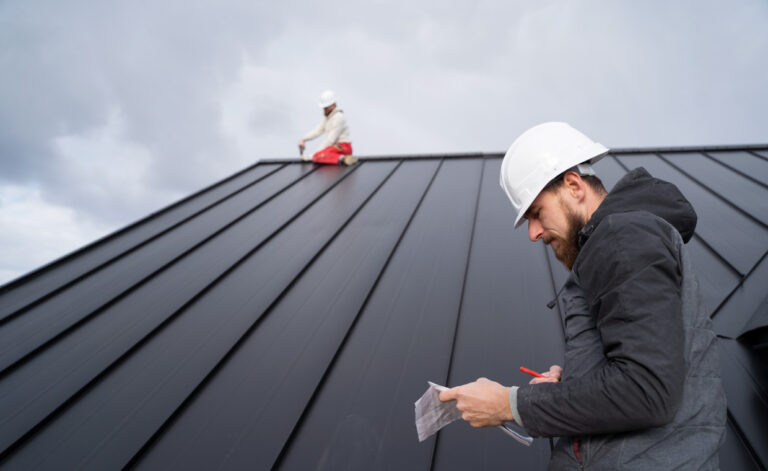Roof replacement projects can be dangerous due to the risks posed by high elevations, weather conditions, and the heavy tools required. Safety is essential for the workers, the residents, and the property itself. Accidents such as falls, electric shocks, and structural damage could occur without proper precautions. We will explore more about Elevation Construction LLC roof replacement contractors’ various strategies to ensure a safe working environment during projects. From planning and training to using advanced equipment, contractors implement multiple layers of protection to minimize risk.
Training and Certification: Building a Foundation of Safety
One of the most critical elements in ensuring safety during roof replacement is adequate worker training and certification. Contractors must ensure that all workers know Occupational Safety and Health Administration (OSHA) regulations and understand the hazards of working on roofs. This training equips workers with knowledge of handling tools, securing ladders, and using safety harnesses effectively. Training programs often cover how to assess the condition of a roof before beginning work, identify weak spots, and understand how to distribute weight evenly to avoid unnecessary stress on the structure. Moreover, workers are trained to handle potential emergencies such as unexpected weather changes, injuries, or the discovery of hazardous materials like asbestos. Proper certification ensures workers know the latest industry safety standards and best practices, contributing to a safer work environment.
Using Personal Protective Equipment (PPE) for Added Protection
Personal protective equipment (PPE) is crucial in maintaining safety during roof replacement projects. Contractors emphasize the importance of wearing hard hats, non-slip boots, and gloves. Hard hats protect workers from falling debris, while non-slip boots ensure a secure grip on potentially slippery surfaces. Gloves provide hand protection from sharp tools and materials. The most important piece of PPE in roof replacement is the safety harness, which prevents workers from falling in case of a slip. Workers must anchor themselves to a stable point, ensuring they remain safe even if they lose balance. In addition to harnesses, some contractors use fall arrest systems, including safety nets and guardrails. These collective measures offer a secondary line of defense, protecting workers and people on the ground.
Weather Monitoring: Adapting to Environmental Factors
Weather is an unpredictable yet essential factor in any roof replacement project. Contractors must monitor weather forecasts and adjust project schedules to ensure safe working conditions. High winds, rain, or snow can make roofs slippery and hazardous, increasing the risk of accidents. Contractors prioritize worker safety by delaying work when adverse weather conditions are expected. Furthermore, if work must continue in less-than-ideal weather, contractors employ additional measures like securing temporary shelters, using heavier-duty PPE and enhancing the anchoring of materials and equipment. Weather-proof tools and materials can also help minimize the risks associated with harsh weather. Workers are trained to recognize when conditions have become too dangerous, ensuring they evacuate the worksite in time to avoid accidents caused by sudden storms or strong wind gusts.
Fall Protection Systems: Securing the Work Environment
One of the most significant risks during roof replacement is the danger of falls from high elevations. To mitigate this, contractors set up comprehensive fall protection systems. Guardrails, scaffolding, and anchor points are commonly installed to provide workers with secure contact points. These systems prevent workers from approaching the roof’s edge without safety precautions. Additionally, roofers use warning lines and designated walkways to guide workers along safe routes while they complete tasks. Contractors also assess the roof’s condition before work, ensuring the structure can safely support scaffolding and other equipment. Specialized equipment like aerial lifts and suspended platforms are employed for higher buildings, enabling workers to carry out tasks without directly walking on the roof. This approach minimizes the risk of falls and ensures workers can safely complete roof replacement even in challenging environments.
Tool and Material Handling: Minimizing Risks Through Proper Management
Roof replacement requires heavy machinery, power tools, and large materials, all of which pose risks if not handled correctly. Contractors ensure that all workers are trained in properly using tools, from pneumatic nail guns to power saws. Misuse of these tools can result in injury not just to the person using them but also to others on the roof or ground. Contractors also implement strict protocols for transporting and lifting heavy materials like shingles, beams, and panels. Workers are trained to use cranes, lifts, and pulleys to move these materials safely, reducing the risk of strain injuries or accidents caused by dropped items. Additionally, contractors establish clear guidelines for storing tools and materials when not in use, preventing trip hazards or accidental falls.
Read also: How Roofing Contractors Handle Roof Repairs vs. Full Replacements
Roof replacement contractors take extensive steps to ensure safe working conditions during their projects. From proper worker training and personal protective equipment to careful weather monitoring and fall protection systems, each layer of safety is designed to protect both workers and the people around them. Effective tool management and clear communication also minimize risks on the job site. Finally, contractors ensure that their projects do not endanger the surrounding environment, providing residents and property owners peace of mind. Through these comprehensive measures, contractors demonstrate a commitment to safety essential for successful roof replacement projects.
